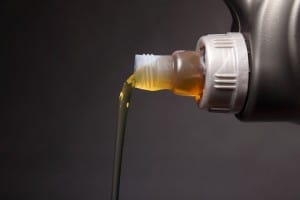In today’s competitive business climate, every penny a company can save is welcome. For example, many are taking advantage of technological breakthroughs that have produced smaller hydraulic systems, saving on power due to the smaller size. However, getting the same amount of work done with a smaller pump carries inherent risks.
 The first risk is that the volume of fluid movement is increased relative to the volume of oil. This can create higher oil temperatures due to decreased oil residence. Oil stays at higher temperatures for longer periods of time and often doesn’t have time to cool sufficiently. This has resulted in temperatures as high as 130 degrees which results in increased oxidation of the oil.
The first risk is that the volume of fluid movement is increased relative to the volume of oil. This can create higher oil temperatures due to decreased oil residence. Oil stays at higher temperatures for longer periods of time and often doesn’t have time to cool sufficiently. This has resulted in temperatures as high as 130 degrees which results in increased oxidation of the oil.
The net result is that contaminants such as water, foam and wear debris remain suspended in the oil, which eventually results in the oil breaking down to form a tacky substance known as varnish. This varnish and sludge buildup causes poor response from the hydraulic valves. This can cause your filters to need replacement more often. Worse yet, varnish can cause erratic operation of the hydraulic system, increased wear on pumps and valves, shorter oil life, increased downtime and less fuel efficiency.
Using Lubrication Additives
Varnish increases friction, decreasing the lubricating effect of the oil. Therefore, it is necessary to use an additive to help the oil do its job and provide sufficient lubrication. Until recently, there were two options to fight varnish: increase the quality of filtration and use a higher-quality oil. Unfortunately, the use of a high-level filter actually increases the level of varnish because the microdieseling not only breaks down the oil and additives but causes the formation of varnish.
In recent years, however, additives have been developed that not only clean varnish currently in the system but help prevent the formation of new varnish. We can’t recommend any particular manufacturer’s additive, but we have seen experiments where additives have both cleaned existing varnish and prevented future varnish at astonishing rates.
Always monitor your system for varnish on a regular basis. Then, use the additive recommended for your particular brand of hydraulic system. Generally, this will produce better performance, less downtime and longer component life. It is definitely worth doing.
Call 1300 922 973 to learn more.
